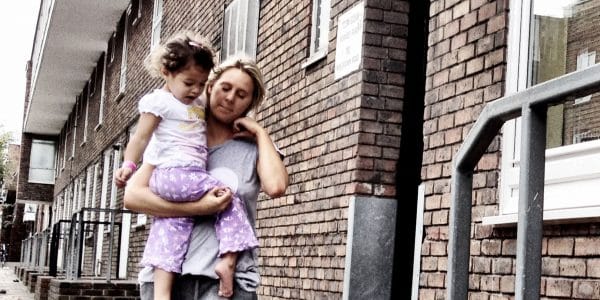
01/05/20
4 min read
Some ethnic groups are overrepresented in COVID-19 hospital deaths compared to the White British majority. For example, per capita hospital deaths of Black Caribbeans are three times that of the majority White British group in England. Per capita deaths in the Other Black group are double that of the population overall, and Indians have also suffered more fatalities than average.
New research from IFS, published as part of the Nuffield-funded IFS Deaton Review of Inequalities, shows that these differences cannot be explained by obvious demographic characteristics such as age and geography. In fact, when you account for the fact that most minority groups are much younger on average than the White British population, per capita hospital deaths rates across almost all minority groups look disproportionately high.
The IFS report presents information on risk factors for each of the largest minority groups in England and Wales: white other, Indian, Pakistani, Bangladeshi, black African and black Caribbean. These risk factors relate to infection risk and economic vulnerability in the short term but beyond the scope of this report are a range of other factors which may prove to be important as more research is undertaken, as well as the longer-term consequences of widespread societal disruption for the outcomes of different groups.
Key findings
The impacts of the COVID-19 crisis are not uniform across ethnic groups, and aggregating all minorities together misses important differences. Understanding why these differences exist is crucial for thinking about the role policy can play in addressing inequalities.
Per-capita COVID-19 hospital deaths are highest among the black Caribbean population and three times those of the white British majority. Some minority groups – including Pakistanis and black Africans – have seen similar numbers of hospital deaths per capita to the population average, while Bangladeshi fatalities are lower.
Once you take account of age and geography, most minority groups ‘should’ have fewer deaths per capita than the white British majority. While many minority groups live disproportionately in areas such as London and Birmingham, which have more COVID-19 deaths, most minorities are also younger on average than the population as a whole, which should make them less vulnerable.
After accounting for the age, gender and geographic profiles of ethnic groups, inequalities in mortality relative to the white British majority are therefore more stark for most minority groups than they first appear. Black Africans and Pakistanis would be expected to have fewer fatalities per capita than white British but at present they are comparable.
After stripping out the role of age and geography, Bangladeshi hospital fatalities are twice those of the white British group, Pakistani deaths are 2.9 times as high and black African deaths 3.7 times as high. The Indian, black Caribbean and ‘other white’ ethnic groups also have excess fatalities, with the white Irish group the only one to have fewer fatalities than white British.
These disparities cannot currently be accounted for by non-hospital deaths. Official deaths in care homes – for which the ethnicity of victims is not currently available but where over 95% of residents are white – could only explain a small part of estimated excess fatalities recorded in hospitals for minority groups. The ethnic composition of additional deaths directly or indirectly caused by the virus but not officially attributed to it is unclear at this time.
Occupational exposure may partially explain disproportionate deaths for some groups. Key workers are at higher risk of infection through the jobs they do. More than two in ten black African women of working age are employed in health and social care roles. Indian men are 150% more likely to work in health or social care roles than their white British counterparts. While the Indian ethnic group makes up 3% of the working-age population of England and Wales, they account for 14% of doctors.
At-risk underlying health conditions are especially prevalent among older Bangladeshis, Pakistanis and black Caribbeans. Compared with white British individuals over 60 years of age, Bangladeshis are more than 60% more likely to have a long-term health condition that makes them particularly vulnerable to infection, which may explain excess fatalities in this group.
Many ethnic minorities are also more economically vulnerable to the current crisis than are white ethnic groups. The fact that larger shares of many minority groups are of working age means that these populations are more exposed to labour market conditions as a whole, but even amongst working-age populations there are clear inequalities in vulnerability to the current crisis.
Men from minority groups are more likely to be affected by the shutdown. While in the population as a whole women are more likely to work in shut-down sectors, this is only the case for the white ethnic groups. Bangladeshi men are four times as likely as white British men to have jobs in shut-down industries, due in large part to their concentration in the restaurant sector, and Pakistani men are nearly three times as likely, partly due to their concentration in taxi driving. Black African and black Caribbean men are both 50% more likely than white British men to be in shut-down sectors.
Self-employment – where incomes may currently be especially uncertain – is especially prevalent amongst Pakistanis and Bangladeshis. Pakistani men are over 70% more likely to be self-employed than the white British majority.
While in the population as a whole young people are more likely to be affected by the shutdown, the reverse is true among Pakistanis and Bangladeshis. While 24% of young white British and 29% of young Bangladeshis work in shut-down sectors, the figure is 14% for 30- to 44-year-old white British but 40% for 30- to 44-year-old Bangladeshis. This also means that the family circumstances of those affected by shutdown differ by ethnicity, with older workers more likely to be living in couples.
The potential for buffering incomes within the household depends on partners’ employment rates, which are much lower for Pakistani and Bangladeshi women. As a result, 29% of Bangladeshi working-age men both work in a shut-down sector and have a partner who is not in paid work, compared with only 1% of white British men.
Bangladeshis, black Caribbeans and black Africans also have the most limited savings to provide a financial buffer if laid off. Only around 30% live in households with enough to cover one month of income. In contrast, nearly 60% of the rest of the population have enough savings to cover one month’s income.
More about the IFS Deaton Review
















































